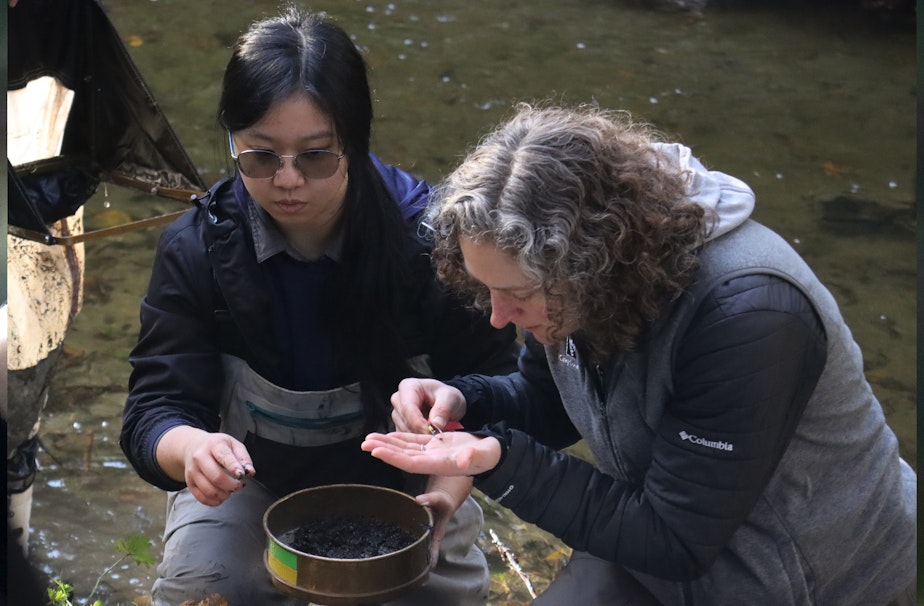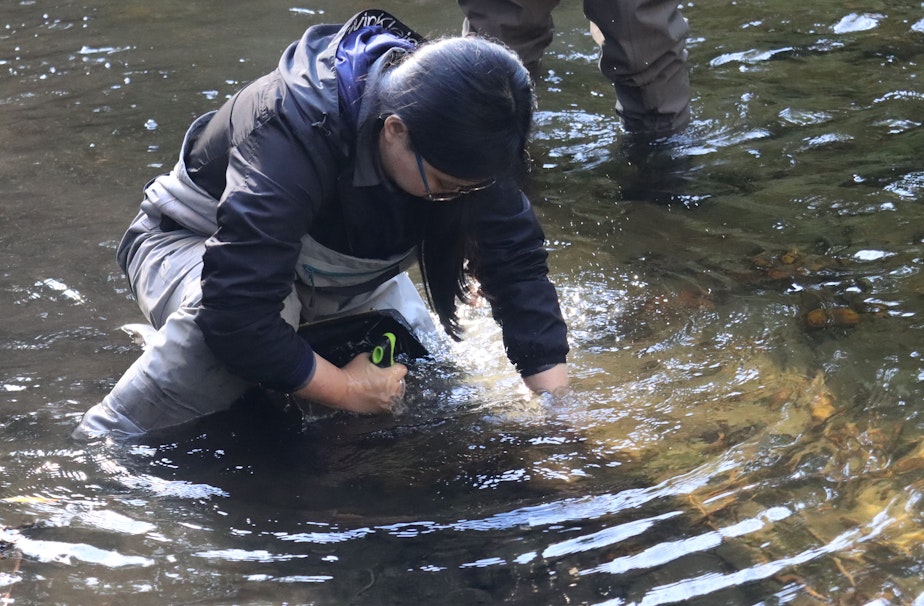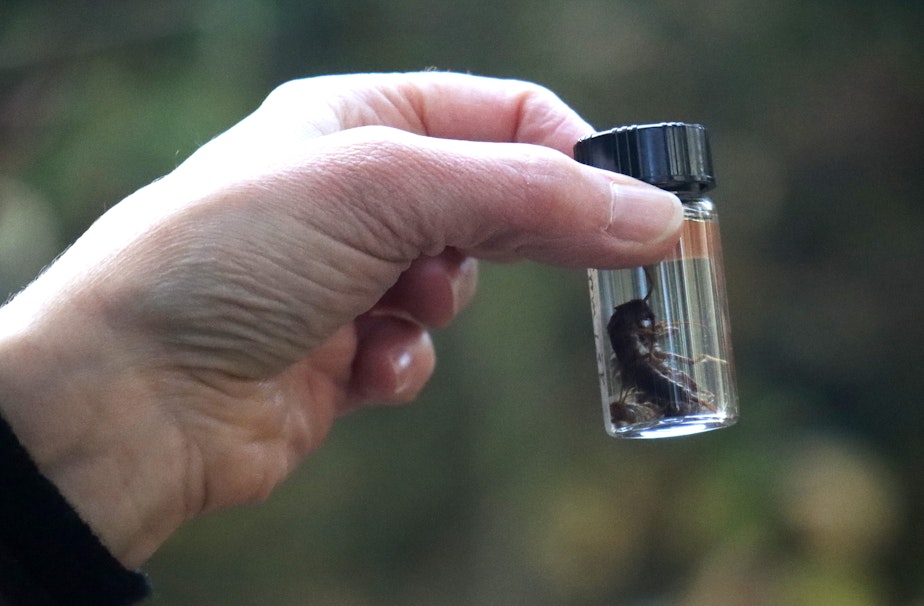Want some good news? King County streams are getting healthier

Several 20-year long studies show that King County streams have fewer pollutants compared to previous samples, despite a population boom. In one study, a quarter of sites improved in water quality while only 3% declined in health.
On the corner of 95th Street and Sandpoint Way, near Matthews Beach Park, a small trail leads to Thornton Creek. Two scientists are in the creek with a large net. They are collecting samples of sediment, and looking for aquatic macroinvertebrates, also known as stream bugs.
Beth Sosik, an environmental scientist with the county, says the recent studies evaluating stream health in King County show the presence of more bugs like stoneflies, mayflies, and caddisflies, indicators of improved water quality.
“These bugs stay in the streams for a long time and experience all the changes in water quality and habitat that occur throughout the year,” Sosik explained. “Unlike fish, they don't move around very much, so the bugs that we find at a site indicate conditions at that site over the past year or more.”

Kate Macneale, who is also an environmental scientist, said stream bugs are especially sensitive to fine sediment. Some fine sediment is “natural” but too much fine sediment is like “putting sand in your smoothie” for bugs.
Sponsored
Macneale said it’s especially a problem when it rains really hard, or during winter storms when the stream turns a milky brown, as the fine sediment gets picked up and swirled around.
“It’s like getting scrubbed with sand,” she said.
Macneale said the bugs typically would dig down in “those little nooks and crannies, between the rocks, all those interstitial spaces get blocked. That really displaces those bugs.”
When scientists collect samples, they target rocky bottom areas where the water is moving around, that is where the most sensitive bugs “hang out.” Once they catch the sample, scientists dump out the bugs into buckets.
Macneale hovers over the buckets that contain a fresh sample from Thornton Creek.
Sponsored
“That's a caddisfly," she said. "That's some of these stoneflies that we're seeing improve these days.”
Caddisflies tend to spend nearly a year to two years in the stream before they leave the water. Macneale says the presence of bugs with longer lifespans, indicate a healthy stream as the bugs can grow to maturity.

Scientists could not pinpoint a specific reason for why the streams are getting healthier. But, Sosik emphasized that “this is a regional trend, meaning it’s not just one place or one action that’s causing this improvement." She linked the improvement to various environmental changes that include factors like less fine sediment, air temperature, and shifts in stormwater flows.
Macneale also studied how the age of developed sites impact the water quality of streams. She tracked 87 watersheds in King County to see if streams and watersheds with newer development are healthier than watersheds with older development.
Sponsored
Macneale said streams in areas with older development tend to be poor in health. But she found that in areas with new development the streams were up to 20% healthier.
“Newer development has been subject to rules and regulations. These are meant to protect streams. Older development in many areas in our county was built before the rules and regulations were passed,” Macneale explained. “The results [of the study] show that even in growing cities, streams are more resilient than we once thought. We were surprised to see improvements in streams that we didn't believe could get better, and that streams in newer urban areas weren't as damaged as expected.”
Macneale credited healthier streams to environmentally friendly building regulations, stricter rules on runoff from roads and construction sites, and removing invasive plants. She said that these changes “will help benefit bugs, fish, wildlife, and people.”
But she warned that we are still far from the finish line. She said people can help improve local water quality by fixing car leaks to avoid runoff.
She also suggested that residents avoid using pesticides and fertilizers when they take care of their lawns, and dispose of pet waste, hazardous waste, and household waste properly. She also suggested creating a rain garden, which helps filter out pollutants, even when they are not located near a stream. Rain gardens also help manage stormwater that can carry pollution into storm drains.




